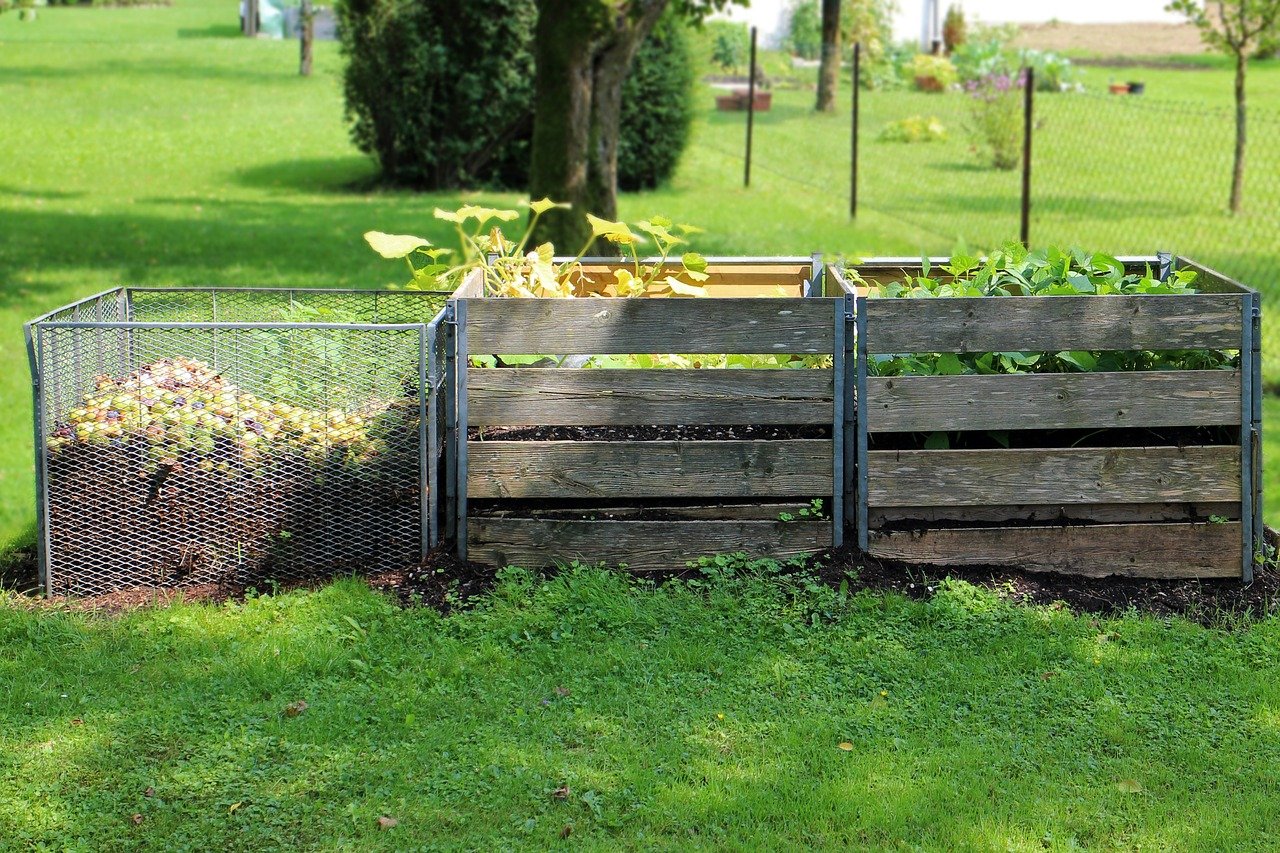Food waste in the United States, and, indeed, throughout Camas, Washougal, and Vancouver, Washington, is a genuine problem. The average American family produces up to twenty pounds of unnecessary food waste per month. Even those who are environmentally conscious can’t help but let their eggs shells, tea bags, and banana peels slip through the cracks from time to time. Although these offenses may seem insignificant, food waste piles up in landfills devoid of the oxygen necessary for natural decomposition. Instead, the food decomposes anaerobically and produces methane, a harmful greenhouse gas.
The problem at hand appears to be a daunting one, with no definitive solution. And, while the former may be true, the latter couldn’t be more wrong. Composting is a painless process that if practiced universally and implemented diligently, can make a significant difference. By the end of this post you will be better educated on composting methods and, if you haven’t already started, will persuade you to make composting a part of your everyday life.
The Basics
Before getting into the methodology, a better understanding of compost is necessary. Three ingredients are found in every functioning compost pile: “browns,” “greens,” and water. Browns are materials that contribute rich amounts of carbon to the compost pile; they are found in abundance around every yard in the form of dead leaves, branches, and twigs. Greens, on the other hand, provide a much-needed source of nitrogen to the pile and come in many forms; fruit scraps, vegetable waste, grass clippings, and coffee grounds are just a few examples. An even number of browns and greens are imperative to a healthy, fast-acting compost heap. Adding too much carbon, and your pile will compost too slowly, while too much nitrogen creates an undesirable smell.
Water is the final element that is crucially important to a productive compost pile. Not enough moisture can completely hinder the decomposition process. Conversely, an excess of water will deprive microorganisms of the oxygen they need to remain hard at work. However, every pile is different and will require trial and error to determine the perfect amount of water. A helpful tool for beginners is a compost moisture meter. It’s a handy tool that gauges moisture more accurately when calibrated to an ideal moisture level. Once a happy medium is pinpointed, compost piles thrive in no time.
Outdoor Composting
Composting outdoors is the ideal experience. Outdoor systems can be much larger than those indoors and attract a diverse array of invertebrates. Earthworms, millipedes, beetles, and snails contribute to the decomposition process in a major way. The easiest approach to an outdoor composting system is a holding unit.
Holding Unit
This process is a slower one but is by far the most hands off. A holding unit can be built with little effort out of chicken wire, wood planks, or plastic. An open top and plenty of room for airflow on the sides are the only requirements. The disposal process is as simple as throwing organic materials into the bin and waiting.
Ideally, holding units are kept out of direct sunlight and away from high winds. Throwing a tarp over a unit after disposal is a widespread practice. Avoid placing a holding unit next to wood structures or trees; over time, it can cause decomposition in both.
The ease of a holding unit is undeniable, but there are other methods that can be practiced, achieving quicker results. Turning units are widely regarded as the quickest method of composting.
Turning Unit

The most common form of turning units can be seen above. It’s a structure comprised of three holding units directly adjacent to one another. Turning units allow for aeration, which supplies more oxygen to bacteria and decreases foul odors from the pile. The process is a little more complicated than holding units but yields quicker results:
- Dispose of organic waste into one bin at a time (start with the leftmost receptacle).
- After a couple of weeks (or once the temperature of the pile has severely dropped) move the contents of the left bin into the empty middle bin.
- Once a pile has been turned over, the bin it previously inhabited can be filled with a new pile.
- Repeat steps 1-3 until all bins are occupied.
Rotating Structure

Another popular turning unit is the rotating structure or tumbler. It’s typically a ball or barrel that spins on its axis to allow better aeration. The process is relatively simple but is a bit of a learning curve.
- Save up enough organic material to fill the entirety of the rotating structure.
- Dispose of all organic material at once into the receptacle. (Once full, more waste cannot be added until decomposition is complete.)
- Rotate the tumbler every few days to supply the waste with ample oxygen.
- When the batch is completely decomposed, remove the compost, and repeat steps 1-3.
Indoor Composting
If composting outdoors isn’t an option, don’t stress. There’s always the great indoors! Those who compost indoors know that with limited space comes limited methods. But there’s a tried and true method accepted by all who dare to go about it indoors.
Compost Bin

The indoor compost bin is just about as simple as it looks. The top opens, the waste goes in, and in a matter of months; compost. Anything that can go in an outdoor holding unit can go in a can, but it does require a little more attention. A good habit to pick up is to keep around shredded paper or another brown that can be thrown into the bin along with any waste. This will keep your compost from getting too soggy and will provide a healthy amount of carbon.
Turning the contents of a compost bin is very important. Use a handheld shovel to fluff up the contents of the bin. It will eliminate any dry spots or wet spots, help aerate, and will marginally heat up the compost. Temperature is key as it will increase microbial action. Another exercise to practice is the act of cutting up food waste before dumping into the compost bin. The logic is simple; the smaller the pieces, the quicker they’ll decompose.
Composting is a painless process that benefits everyone, and everything involved. From the enrichment of soil to the lowering of carbon footprints it’s truly a significant step towards a cleaner lifestyle. If you have questions about composting, would like assistance with implementing a composting system, or if you’d like help with any other landscape projects, you can reach Urban Eden Landscaping at 360-567-6399, contact us here, or fill out a free estimate request form online. Happy composting!

